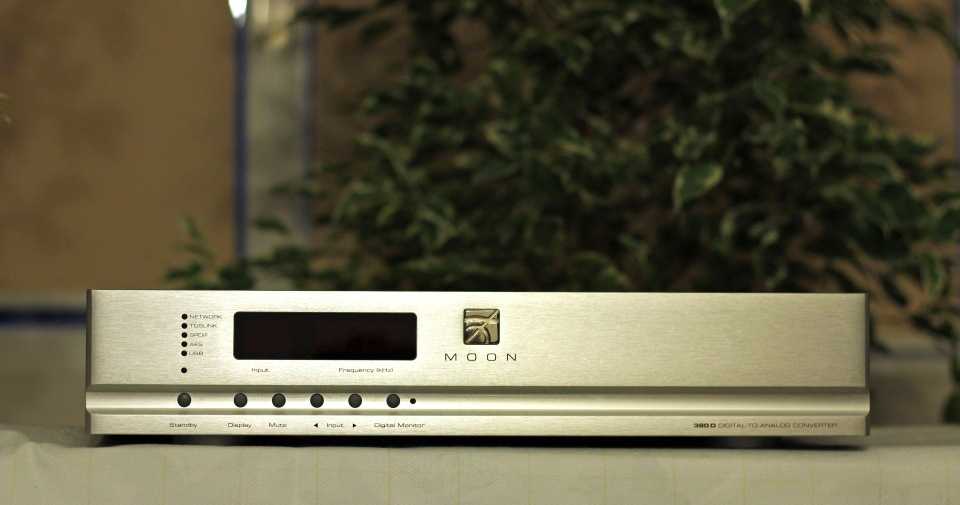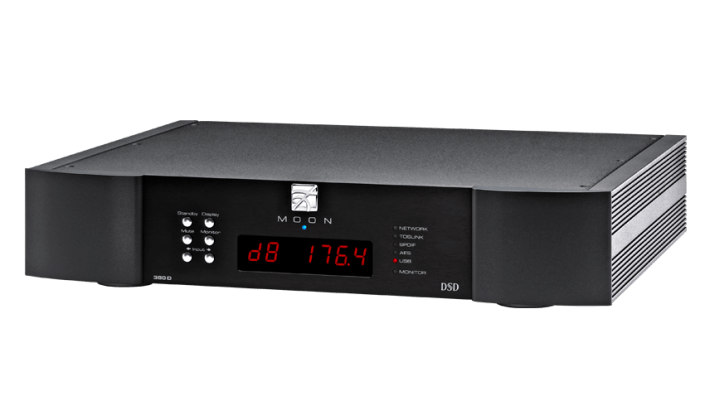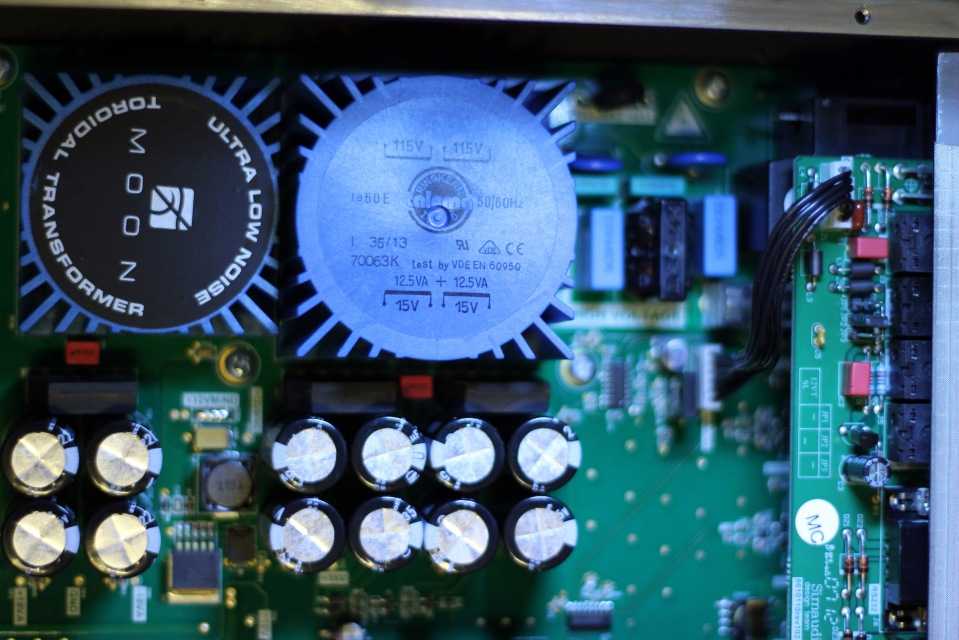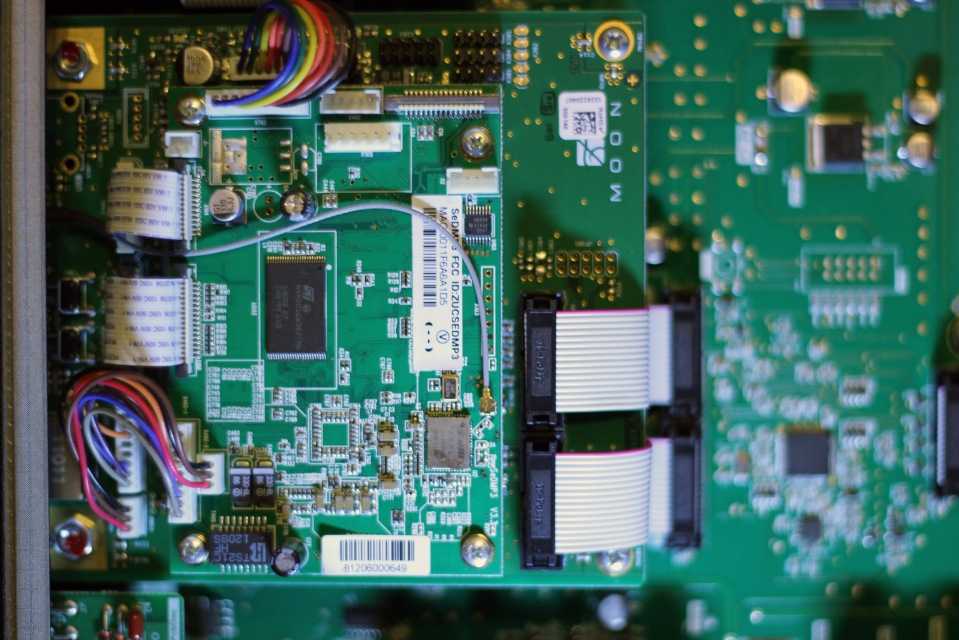Когда «музыкальный центр» — не оскорбление
не методическое руководство для начинающих и продолжающих музыкантов, хотя может быть использовано и таким образом. Это — умная, искренняя книга одного из талантливейших людей в поп-музыке последней трети XX века и дня нынешнего, в которой он вспоминает, изучает, думает, рассуждает, рассказывает и пытается понять суть тезиса, вынесенного в название книги.
Naim создали очень универсальную аудиосистему. Это действительно устройство «все-в-одном», совмещающее в себе полноценный стример с аудиосистемой достаточно высокого класса. Она не переиграет стереопару, формат все-таки накладывает ограничения, но инженеры Naim постарались с ними справиться — добавили внутреннего объема, переделали электронику, использовали новый DSP.
Но этим ее функционал не ограничивается — к ней можно подключить все, что угодно, и даже немножечко больше. Возможно, Mu-so 2 — настоящая, правильная современная интерпретация хайфайного музыкального центра. Потому что именно музыка — центр ее существования.
Звук для системы такого формата у нее большой и удивительно детальный. Акценты в нем расставлены, наверное, немного непривычно, и на первый план выходят высокие частоты, которые поддерживает чуть поддутый бас, но общая картина кажется хоть и окрашенной, но в рамках этой окраски сбалансированной. Плотной, равномерной, без серьезного разделения образов в пространстве.
А визуально система практически не отличается от прошлого поколения. Потому что с внешностью у Mu-so все и так было в порядке. Осталось только довести до ума ПО — и она будет стоить каждого рубля, что за нее просят.
Достоинства: внешность, масштабный звук, широкие возможности подключения.
Цена: 139 880 рублей
Listening Impressions and Tests
The tests have been done with Audio-Gd Master 9, AG500 Power Regenerator, Sennheiser HD800, Audeze LCD-X, Audio-GD Precision 2, Focal Aria 906.
I’ve tried to use the Neo 380D DSD with my regenerator and something seemed a little off. It wasn’t a good match and it sounded better directly from the wall socket. With the regenerator I lost bass depth, energy and musicality. This is good news as you don’t need to buy anything else with it.
Using my Forza Split USB cable, I took out the 5V and saw that the Moon driver disappeared from playback devices. Ok, so the usb input uses the 5v. No problem, as I was ready for that and I applied the same tweak I described here, meaning that I used a forza split usb cable that takes only the signal from the pc and the 5V from a linear power supply. The sound improved in the same way I described in the article above.
After listening to some songs, I realized this DAC is something special. Hang in for a fun ride.
I have also tested it with my Focal Aria 906 bookshelves powered by the Audio GD Precision 2. I felt like the Neo 380D DSD was an awesome match with them. The mids on 906 became even more lively and enjoyable. Everything sounded extremely and euphonical and musical with great energy and in a lively fashion. Actually I felt like I lost less speed, attack and transparency compared to MSB Analog Dac, than it did on the headphone system. This may also be because the 906 can’t scale as much as HD800.

Hugh Laurie – Kiss of Fire
Wow, this is a good one. The first guitar plucks drew my attention, as they had something really special. Then the female voice came in and I did not expect this level of naturalness from a delta sigma dac, especially from a Sabre implementation. Both voices had a warm and pleasant tonality with good presence and detail. I was in the front row with the artists, between the instruments. Ah…but the instruments and especially the guitars were magic. Can’t explain what they have yet, but they have something really special and euphonic.
Rodrigo y Gabriela- “Hanuman”
The first thing I noticed was that the plucks weren’t so powerful and full sounded as Analog Dac. The guitar’s enclosure could be felt better with analog dac, giving a better idea of its size when used as drums. However, the extension of the guitars had something special again, something added that made the sound more pleasant. I think I got it, it’s like having some harmonics attached to it, giving a very interesting touch to the sound, making the mids incredibly euphonic, similar to the harmonics found in tube amplifiers.
Pink Floyd – Another Brick in the Wall ( Part 2 )
The sound just flows and flows continuously taking you with it in its musical stream. The voice is present, very pleasant and analogically textured while the instruments play with ease around it. The drums have a very interesting punch. It’s not a very strong one, but not weak either, but it is integrated very well with it’s decay and with all the other instruments and vocals, giving a very nice and musical flow to the listening experience.
Nightwish – Wishmaster
Wanted to see how some electrical guitars sound with these mids and my expectations were not disappointed in this area as the guitars were very pleasant here too. However, this song could have used more speed and impact, which Analog Dac is more capable of.
Leonard Cohen – Come Healing
The female voices from the beginning astonished me, leaving me stunned and completely drawing me into the song. They had an incredibly natural and pleasant tonality and texture. It was like someone was singing in my ears, this giving me goosebumps. Leonard’s voice was very nice as well, with a detailed texture that showed the pleasant ruggedness of his voice.
The harmonics that I was talking about were present here too, making this song very enjoyable. Not only that all the instruments had a very euphonic extension, giving them an unique sound signature, but it also had a very good soundstage, instrument separation and details.
Technical Specifications and Looks
Don’t be scared by the following picture. I know this is an old case of 380D, but it was fully upgraded to Neo DSD 380D inside. Seeing the new case as well, I must say that I like the latest quite a lot more than the old one as it has a more appealing design and thicker materials.

And now let’s see how the new enclosure looks like:

The higher end moon products always impressed me with their build quality. They are so sturdy and seem so well build that they give me the impressions that they wanted them to last a nuclear war or something.
When I said that Moon upgraded their products, it was somewhat of an understatement as they kind of changed the whole dac board.
You can find all about the product here.
Let’s go through some features that caught my eyes:
- Fully asynchronous DAC supports DSD up to DSD256 (USB only) and PCM up to 384kHz (32-bit on USB only).
- 8 digital inputs (AES/EBU x 2, S/PDIF x 3, TosLink x 2 and USB x 1) allowing for a connection to virtually any digital source, along with one S/PDIF digital output.
- Full digital monitor loop on S/PDIF to accommodate external devices such as a room correction component.
- Our own “Dual Jitter Control System” produces a virtually jitter-free digital signal for ultra-low distortion, ensuring
compatability with any connected digital device. - The analog stage is a fully balanced differential circuit for increased dynamic range and headroom, higher
resolution, as well as improved signal-to-noise ratio. - THD @ 1kHz, 0dBFS (A-weighted) < 0.001%
- Intermodulation distortion < 0.001%
- Dynamic Range > 120dB
- Signal-to-noise Ratio > 120dB @ full output
- Channel Separation > 116dB
- Intrinsic Jitter -> 1 picosecond RMS
- 4-Layer printed circuit boards with pure copper tracings for a much shorter signal path
- Weight – > 7.5 kg

And yes, it does have all the outputs/inputs you would ever need.

The Digital/Analog power supply transformers have 25VA / 10 VA and the power supply capacitance is 26400 µF .

Особенности
Цифро-аналоговое преобразование аудиоданных выполняет ЦАП Burr-Brown PCM1793. В про-цессе внутренней восьмикратной передискретизации цифрового аудиосигнала его частота повышается до 352,8 кГц.
Аналоговые и цифровые схемы смонтированы на отдельных платах для того чтобы сократить пути прохождения сигналов и снизить таким образом влияние взаимных наводок. Кроме того, каждая схема имеет собственную шину заземления. Применяется медная разводка схем с золотым напылением.
Возможности управляющей коммутации весьма широки. Во-первых, есть порт RS-232, который обеспечивает как двусторонний обмен управляющими сигналами с другими компонентами, так и возможность перепрошивки памяти проигрывателя в будущем. Во-вторых, имеется ИК-порт, который позволяет удаленно управлять проигрывателем. И в-третьих, благодаря фирменной системе SimLink и паре разъемов RCA (вход и выход) этот проигрыватель может быть интегриро-ван с другими компонентами SimAudio.
Дисплей на передней панели имеет четыре уровня свечения символов, включая режим полного гашения, и три режима отсчета времени воспроизведения: от начала трека, от начала диска и до конца диска. Большие ярко-красные символы индикации хорошо заметны даже при ярком освещении, поэтому невозможно ошибиться, какая информация выводится на дисплей.
Реализован режим случайного воспроизведения трека, возможность программирования вос-произведения треков, а также режимы «повтор трека» и «повтор диска». Все коаксиальные аудиоразъемы позолочены.
Внутри Hi-Fi-система
Система Mu-so представляет собой 3-полосную стереосистему с акустическим оформлением фазоинверторного типа. Наиболее широко разнесены на передней панели СЧ-динамики, отвечающие, как вы понимаете, за самые важные участки частотного спектра. Рядом с ними расположены шелковые твитеры, и уже почти по центру размещены овальные НЧ-динамики, нагруженные на порт фазоинвертора. Все излучатели разработаны специально для Mu-so, и каждый из них подключен к своему усилителю мощностью 75 Вт (450 Вт общей мощности).
Naim Mu-so в разобранном виде на презентации в Мюнхене в 2014 году
Синхронизацией занимается мощный 32-разрядный сигнальный процессор. Подобную схему Naim уже применял в автомобильном аудио для Bentley. Это была непростая и весьма нестандартная система, созданная почти с нуля. Процессор позволяет адаптировать звучание системы к внешним условиям, а точнее, к размещению аппарата, например, около стенки или на полке.
Предусмотрена уже почти забытая функция тонкомпенсации для получения ощутимого баса на малой громкости (отключаемая). Перечень поддерживаемых форматов включает самые часто используемые сегодня виды сжатия: WAV, FLAC, AIFF, ALAC, MP3, AAC, OGG, WMA, что, безусловно, радует.
Тыльная сторона Naim Mu-so несколько необычна. Здесь нет разъемов, а все пространство отдано большому радиатору. На него можно поставить аппарат, когда будете подключать провода
Поддерживаются файлы высокого разрешения вплоть до 24 бит/192 кГц, которых сегодня все больше и больше (например, на том же Naim Label). Проще всего воспроизводить записи на Mu-so через линейный или цифровой вход, если есть источник с соответствующими выходами. Также без труда проигрываются записи с USB-накопителей или через Bluetooth (поддерживается AptX). Правда, выбрать папку для воспроизведения с USB можно только через мобильное приложение, иначе играется первая попавшаяся.
Остальные возможности устройства завязаны на сетевое подключение. Причем сеть может быть проводная или Wi-Fi. Если кабелем будете подключать — все включится само собой (через DHCP-сервер, который есть в любом современном роутере). В случае специфически настроенных сетей и Wi-Fi есть разные варианты настройки, включая встроенную веб-страничку, доступную через собственную же точку доступа Mu-so.
После настройки подключения становятся доступны AirPlay, UPnP, Spotify Connect, интернет-радио и возможности мультирумной организации. Все это удобно и просто настраивается и контролируется мобильным приложением, позволяющим также организовывать собственную библиотеку аудиозаписей и интернет-радиостанций. Самим устройством могут запоминаться до пяти адресов интернет-радио. Любой из них можно выбрать для воспроизведения непосредственно на Mu-so, уже без помощи мобильного приложения.
Summary
Bass
The bass is quite good. Not MSB Analog Dac, good but very good and very well integrated with the rest of the frequencies.
Mids
The mids are the stars of this show. This DAC has something really special here and it was unique in this department. While keeping good detail, I felt like the mids had some secondary harmonics that made the sound very euphonic and pleasant. This might be one of the most musical DACs I have ever listened to in my life.
Treble
The treble is very well extended and detailed. It might be the best treble I’ve heard from a sabre implementation and very good for delta sigma dacs in general, but still not as natural as on Analog Dac.
Voices
The voices are very natural, pleasant and well textured and sometimes give you a very nice feeling of intimacy.
Transients
This is a key point to the euphonic sound signature. Simaudio managed to achieve a very interesting balance here. The attack is not so strong but not too weak either and it integrates perfectly with the decay which works on the same philosophy the attack has, as it’s not so fast, but not so slow either. This gives a very flowing and musical listening experience.
Details
While not the most detailed dac I’ve heard and not in the same league with Analog Dac, it still has very good details and on some fronts the details do excel. Let’s take for example the guitar plucks or any percussion instrument for that matter. The plucks have a very interesting extension with some harmonics attached to it, giving a very tickling sensation to your ears to the point you may get goose bumps.
Transparency
Considering the euphonic sound signature, this is a another interesting aspect of this DAC, as it offers good transparency as well. It’s not it’s first feature you notice, and it’s not the best here, but it’s enough to keep the eufonic signature and still offer clean & transparent sound.

Conclusions
This DAC was extremely fun and pleasant to review. I’ve missed a product like this, a product to impress me so strong. Simaudio managed to achieve a very hard and interesting balance between some very important factors in sound, giving a very musical sound signature but still keeping some key factors like details, transparency, soundstage, etc.
The mids on this DAC are just amazing. All the instruments and voices are very euphonic, especially the percussion instruments. They really manage to tickle your ears to the point that you get goosebumps. While this is very cool, it can get a little tiresome after a while. How, you ask? Well, imagine you like pancakes very much ( I certainly do ). Imagine that you can have them anytime you want and with as much chocolate you want. Eventually, you will get a little tired of them even though they are absolutely awesome. As in that example, the sweet and euphonic mids might overload you after a while.
These being said, I found this DAC to be really special and one of the most musical DACs I have ever heard.
Actually, I think it is one of the best DACs I have ever tested, and wins a place on my recommendation list right after Analog Dac and Wavedream.
Pros
- Excellent build quality and looks
- One of the best mids I have ever heard
- Good bass, in line with the mids
- Detailed, extended treble
- Excellent musicality
- Good transparency, details, soundstage without taking away from it’s musicality
- Very versatile with a lot of inputs/outputs
- Very balanced sound signature, nothing seems to pop out annoyingly in the sound
Cons
- Could use a little more attack & speed, but this may take away from it’s musical nature
- The magical mids can be too sweet after long listening terms
Category : DAC
Tags : 380d dsd, Moon Neo 380D DSD Dac review, neo 380d dsd, Simaudio
Простота — достоинство королей
 Смартфон или колесо управления? Нет разницы
Смартфон или колесо управления? Нет разницы
Управление Naim Mu-so 2nd — особенная гордость компании. Запатентованная: контроль осуществляется большой круглой ручкой в углублении на верхней панели.
Она состоит из механического поворотного кольца с подсветкой, сенсорных кнопок и индикационных светодиодов. Кажется, что все в одной куче. Но это не так: пожалуй, такой регулятор стоит назвать лучшим решением в аудиотехнике.
Уже через пару минут становится понятно, как включать/выключать систему, какие манипуляции приводят к смене источника звука или выхода, что нужно сделать для смены трека и управления воспроизведением.
Все — одной рукой. Кроме разве что запуска определенного трека. Для этого потребуется установить на смартфон или планшет приложение-компаньон Naim App (iOS, Android).
Оно дублирует колесо регулировок и пульт дистанционного управления Mu-so 2nd и добавляет несколько важных функций.
 Экраны управления Naim App понятны всем
Экраны управления Naim App понятны всем
Кроме уже упомянутого выбора трека (а как без дисплея его выбрать — смартфон играет именно эту роль) приложение открывает настройки эквалайзера и той самой оптимизации звучания. Поставил у стены — скорректировал. Перенес в центр комнаты — снова отрегулировал.
Оно же используется для подключения к сетям Wi-Fi (собственный модуль Naim Mu-so 2nd поддерживает 5 ГГц) и создания собственных плейлистов на подключенных источниках аудиофайлов.


































